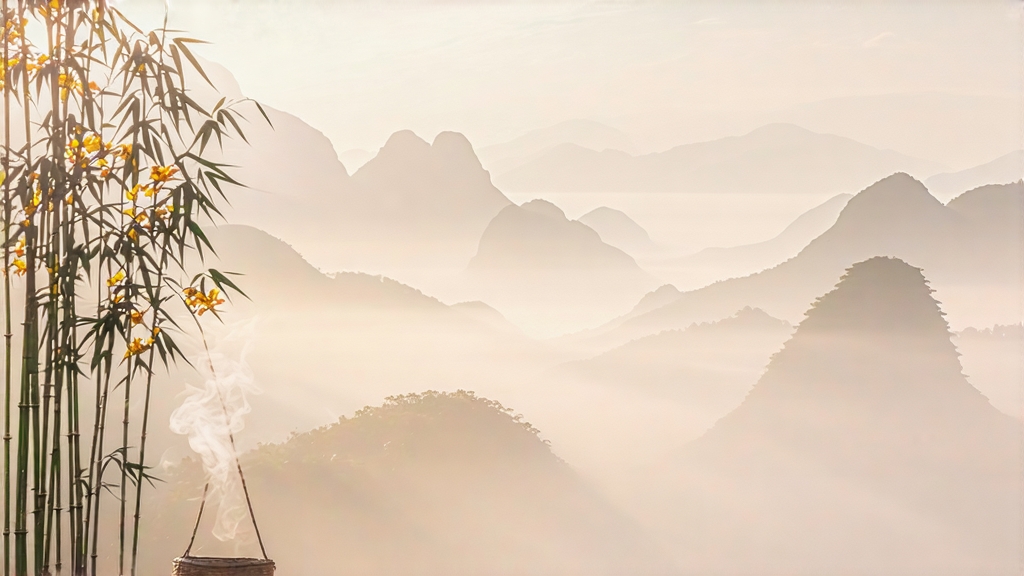
Tucked high in the mist-veiled Dabie Mountains of western Anhui Province, a tea once reserved for emperors still follows rhythms set by the lunar calendar and the mountain clouds. Huoshan Huangya—literally “Huoshan Yellow Bud”—is the least-known yet most aristocratic member of China’s tiny yellow-tea family. While green tea is celebrated for its freshness and pu-erh for its earthy depth, yellow tea occupies a whispered middle ground: the gentle oxidation that happens during a secretive “sealing yellow” process gives it the brightness of spring greens and the rounded sweetness of autumn fruit. Among the six major tea types, yellow tea is produced in the smallest volumes; within that rarity, Huoshan Huangya is the scarcest jewel, its annual yield rarely exceeding three metric tons. To understand it is to step into a world where every leaf is still handled like a relic, and where the difference of one extra hour of warmth can turn imperial tribute into mere commodity.
Historical scrolls place the tea’s rise during the Tang dynasty (618-907), when Huoshan county served as a staging post on the mountain route linking the tea markets of Hubei with the imperial capital at Chang’an. Caravans carried compressed bricks of rough mountain tea, but the local monks of the nearby Fozu Temple discovered that the earliest spring buds, briefly steamed and then wrapped in wet paper, developed a beguiling yellow-green color and a honeyed fragrance. By the Song era, the court had decreed Huoshan tea one of its “four tribute teas,” and pickers were required to tattoo their baskets with imperial seals to prevent pilferage. Legend claims that the Ming emperor Hongwu, himself once a destitute monk, so cherished the tea that he exempted the county from grain taxes in years when frost damaged the tea gardens. After the fall of the Qing, the technique drifted toward extinction; only in 1972 did a retired tea master named Dai Chao-geng reconstruct the process from fragmentary county annals and a single aged tree on the cliff behind the temple. Today, the county government restricts the authentic appellation to buds plucked from gardens situated between 600 and 800 m on the north-facing slopes of the Jinji and Taiyang peaks, where morning fog slows photosynthesis and concentrates amino acids.
The cultivar itself is a local variant of Camellia sinensis var. sinensis, nicknamed “jiuye qi,” or “seven-leaf wonder,” because the first flush often carries an extra miniature leaf that later drops off. Gardeners prune the bushes into shallow arcs that follow the mountain contours, allowing cold air to drain away while trapping humidity. No chemical fertilizer is permitted within the demarcated zone; instead, farmers plant purple-flowering milk vetch between the rows, fixing nitrogen and luring bees whose hive-warmed microclimate wards off early frost. Picking begins on the first day after Qingming festival when the morning temperature hovers between 12 and 15 °C. Only the unopened bud and the immediately adjacent half-open leaf are taken, a standard known locally as “sparrow’s tongue with one flag.” Experienced pickers can gather barely 500 g in a full day, and it takes almost 70 000 such sets to yield one kilogram of finished tea.
What follows is the guarded “menhuang” (sealing yellow) choreography that distinguishes yellow tea from every other category. The fresh leaves are spread on bamboo trays for three hours to lose surface moisture, then wok-fired at 160 °C for exactly 90 seconds—just long enough to inactivate the leaf enzymes without driving off too much internal water. While still warm, they are piled in small heaps inside linen sacks and placed inside a wooden cabinet lined with cedar slats. Here the magic of micro-oxidation occurs: over the next 24 hours the temperature inside the pile rises slowly to 38 °C, encouraged by the mountain yeasts that inhabit the cedar. Once an hour the master opens the cabinet, lifts a handful to his cheek, and inhales; when the leaf veins turn ivory and the aroma shifts from grassy to chestnut-like, the pile is restacked so the inner and outer leaves exchange places. This cycle repeats three times, after which the leaves are again hand-pressed against a wok at 80 °C, shaping them into straight, slightly hooked spines that resemble miniature golden swords. A final low bake at 55 °C for two hours reduces moisture to 5 %, locking in